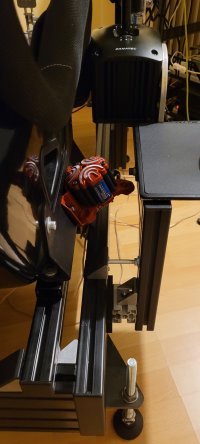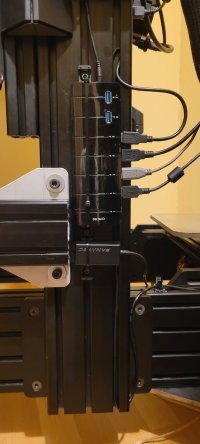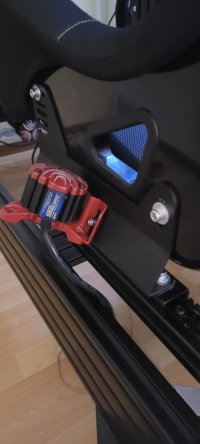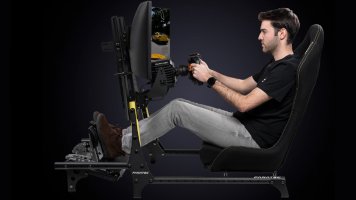Hi everyone, was hoping to get some advice on mounting and placing bass shakers on my P1-X.
I have three shakers (2x AuraSound AST-2B-4 and 1x Dayton BST-1) that I want to mount.
After doing some research it seems a good placement would be two shakers underneath the seat in L/R configurations and one under the pedals.
For the pedals, I've 3D printed a mount for the Dayton shaker that can mount directly to the 8040 profile.
For the seat, my plan was to mount the shakers to some plywood which itself would be mounted to the seat (shakers --> plywood --> seat)
My biggest concern is the vibrations and how to isolate them from the P1-X.
I was thinking of using rubber isolators like these in the locations the shakers are mounted to the rig to dampen the effects.
These work fine for the pedal plate but I'm not sure how to add for the shakers for my seat.
Should I place them between the wood and the seat, or should the be placed between the wood and the rails that connect to my rig?
I have three shakers (2x AuraSound AST-2B-4 and 1x Dayton BST-1) that I want to mount.
After doing some research it seems a good placement would be two shakers underneath the seat in L/R configurations and one under the pedals.
For the pedals, I've 3D printed a mount for the Dayton shaker that can mount directly to the 8040 profile.
For the seat, my plan was to mount the shakers to some plywood which itself would be mounted to the seat (shakers --> plywood --> seat)
My biggest concern is the vibrations and how to isolate them from the P1-X.
I was thinking of using rubber isolators like these in the locations the shakers are mounted to the rig to dampen the effects.
These work fine for the pedal plate but I'm not sure how to add for the shakers for my seat.
Should I place them between the wood and the seat, or should the be placed between the wood and the rails that connect to my rig?













